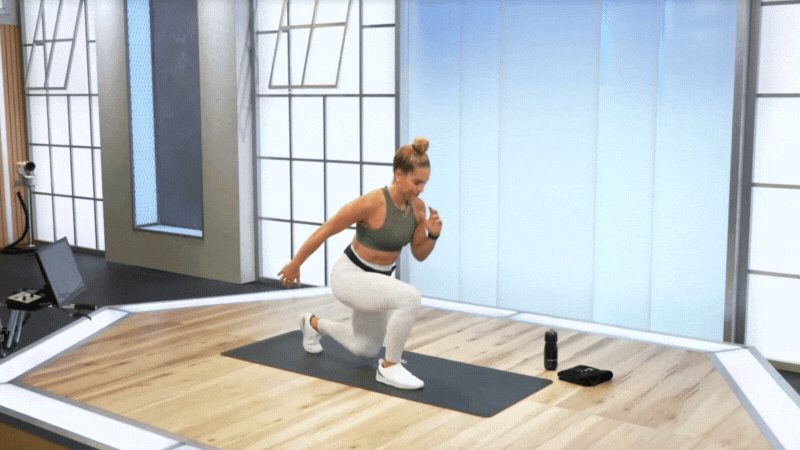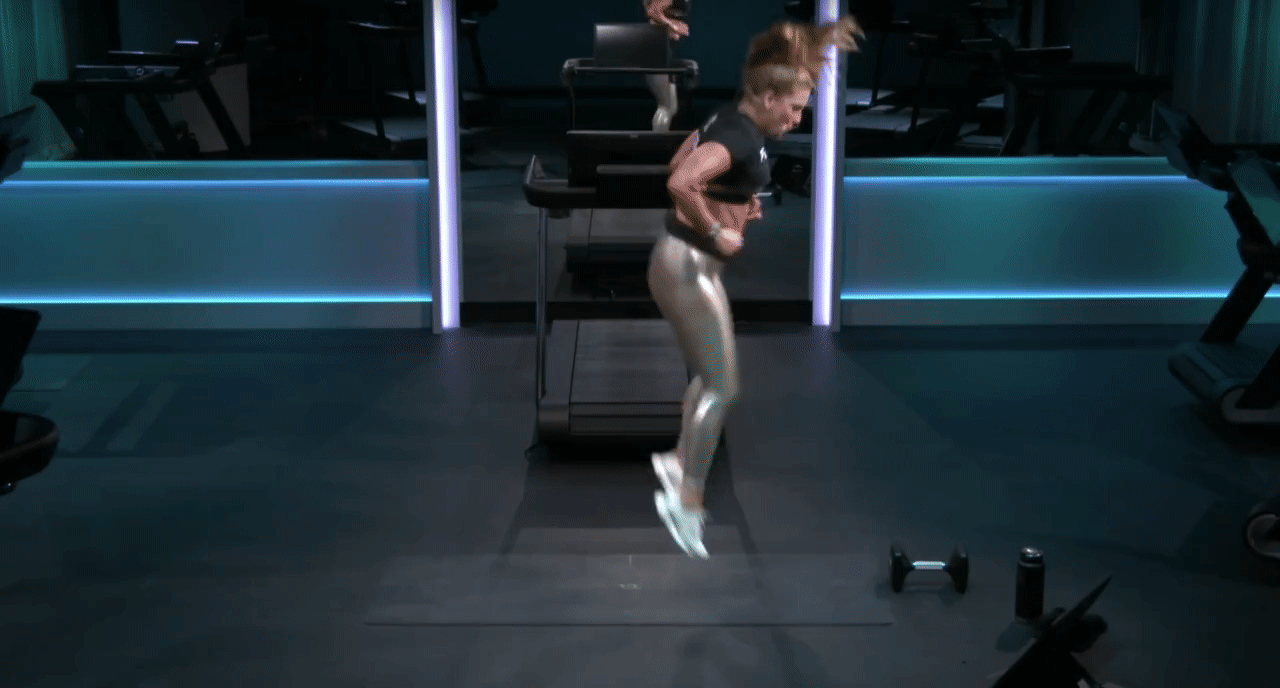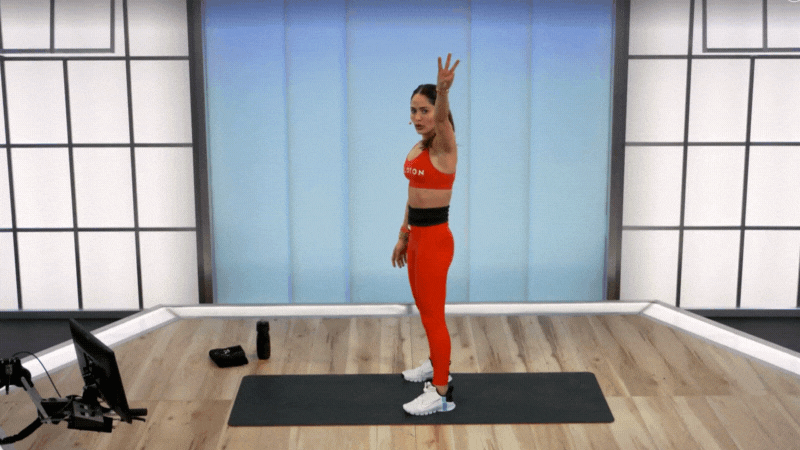
d3sign/Moment via Getty Images
6 Reasons to Add More HIIT Workouts to Your Routine
Adding tougher, shorter exercise sessions to your routine can boost your overall fitness.
By Eric Arnold, Team Peloton•
If you’re short on time and looking for a highly efficient workout, HIIT (high intensity interval training) is the way to go. HIIT offers a multitude of benefits including improved heart health and oxygen consumption—so there’s every reason to add HIIT into your workout routine.
Discover more ways to reach your goals with Peloton
“HIIT workouts give you different benefits than a steady-state, lower-intensity workout,” says, Aimee Layton, PhD, Co-Director of the Pediatric Cardiology Cardiopulmonary Exercise Laboratory at Columbia University.
All activity is good for your heart. But HIIT efforts can be especially impactful—even if your sessions are only 10 or 15 minutes long. In fact, while there’s still plenty to learn, research has shown that HIIT workouts can help improve your overall cardiometabolic health.
Here’s a look at how and why these short, intense bursts of activity can have long-lasting benefits.
What Is HIIT?
HIIT is all about repeated, challenging sets of intensive exercise, alternated with recovery intervals. Unlike the sustained moderate-intensity cardio of a run or bike ride, those rapid bursts of high-powered max effort workouts are thought to be just as effective—if not more—in raising fitness levels.
So, why is HIIT so effective? Well, by exercising in these short bursts, which can be anything from eight seconds to eight minutes, you’re training your body to burn calories without burning yourself out. When you do longer workouts, you’re exercising at a pace that’s harder to sustain and puts more strain on your body’s functions—so much so, you can feel it in your muscles.
That burning feeling? That’s the lactic acid building up. Out of breath? Your body’s stores of oxygen are running down.
What HIIT does is effectively retrain your body to work harder in those short but oh-so intense intervals to build up those stores of oxygen. Studies have actually shown it continues to do this even when you’ve stopped exercising—more on this shortly. It also helps your body’s ability to convert that oxygen into energy too.
There’s no one way to HIIT. You can do it on the Peloton Bike, Peloton Tread, or even on the floor with a Cardio workout on the Peloton App. “In a HIIT workout, the effort is extremely intense but the recovery can be as easy as you need it to be,” says Peloton instructor Olivia Amato, who teaches all three types of classes. “On a scale from one to 10, your HIIT effort should be at least 70 percent of your all out max, or a seven (or higher) out of 10 on the effort scale.”

The Benefits of HIIT Workouts
1. You’ll Build Efficiency and Resiliency
Short HIIT workouts will train your body for different situations, Layton explains. By doing both HIIT and longer workouts, you condition your muscle cells to use different types of energy sources for the different types of workouts—which also makes you stronger over time.
2. HIIT Makes the Heart Grow Stronger
During moderate, steady exercise, your heart works at 40 percent to 60 percent of your predicted maximum. During a HIIT workout, you’re at 80 percent to 100 percent, which gives your heart a very specific type of workout. So on your next ride or run, “your heart will be a little bit stronger, and you will potentially be able to do more work at a lower heart rate,” says Layton.
HIIT trains your heart to work faster, not longer. And thanks to that improved V02 max oxygen consumption, HIIT has been shown to improve cardiovascular health, reducing blood pressure, heart rate, and even blood sugar levels.

3. You’ll Lower Your Resting Heart Rate and Blood Pressure
Having an optimal resting heart rate can be a sign of fitness and good health. During a HIIT session, your muscles’ powerful contractions push more blood into your heart, which then beats harder; you’re training your heart to push more blood with each contraction. Later, when you’re going about your day, your heart won’t need to beat as often to circulate the blood your body needs.
HIIT workouts also help expand your arteries for more blood flow. More blood in wider arteries means a lower blood pressure.
4. HIIT Can Improve Sleep Quality
Like many forms of exercise, HIIT has been linked to better sleep. A 2021 study found that consistent HIIT sessions around three times a week for at least eight weeks, improved sleep quality. And better sleep means better physical and mental health too, and we’re so here for that.

5. HIIT Improves V02 Max
HIIT is an anaerobic exercise, which simply means your body will create energy without oxygen. Aerobic exercise requires oxygen for energy.
In HIIT, the exercises are high intensity, but only for a short enough period of time for your muscles to function without the help of oxygen. This uses your body’s reserves of energy, increasing your body’s demand for oxygen after the exercise is done—known as VO2 max. This creates an effect called excess post-exercise oxygen consumption (EPOC), meaning your body has an increased oxygen consumption and is burning calories long after your sweat session is done.
6. HIIT Helps Build Muscle and Increase Metabolism
Recent studies have shown that HIIT helps speed up your body’s metabolism and metabolic rate forcing your body to use energy from your fat stores. Studies have shown EPOC has also been linked to improvement in muscle growth too.
And the fat-burning doesn’t stop when it’s time to hit the shower. HIIT is the workout that keeps on giving. Excess postexercise oxygen consumption (EPOC) causes your body to continue burning calories long after your workout.
Why? Well, HIIT stimulates the production of human growth hormone. Over time, this increases your overall metabolic rate, helping your body burn calories more effectively and consistently, and helps build muscle.
Ready to experience these benefits? Try a HIIT class on the Peloton App!

Peloton App
Access thousands of classes with no equipment needed.
This content is for informational and educational purposes only and does not constitute individualized advice. It is not intended to replace professional medical evaluation, diagnosis, or treatment. Seek the advice of your physician for questions you may have regarding your health or a medical condition. If you are having a medical emergency, call your physician or 911 immediately.
Level up your inbox.
Subscribe for a weekly dose of fitness, plus the latest promos, launches, and events.
By providing your email address, you agree to receive marketing communications from Peloton.
For more about how we use your information, see our Privacy Policy.














